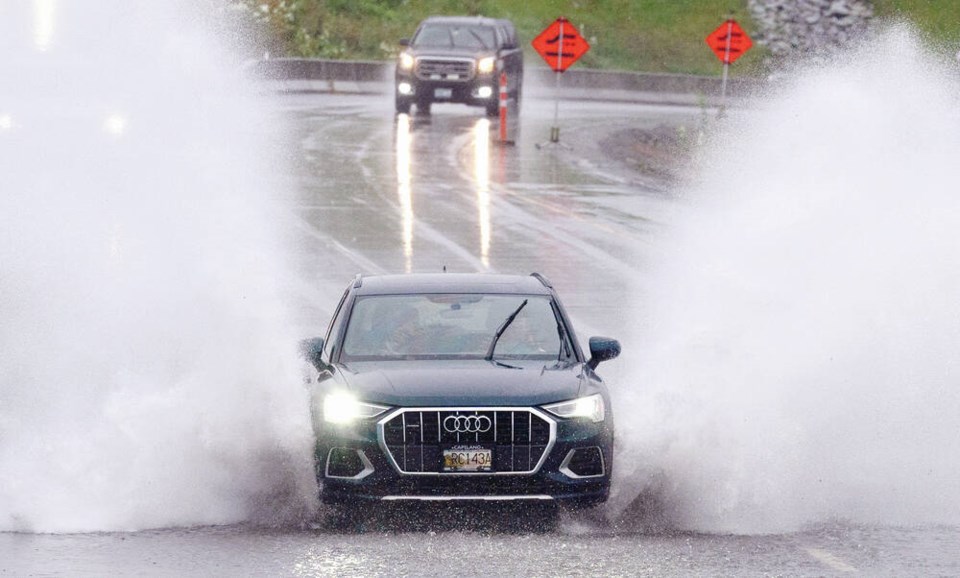After nearly 50 years behind the wheel, it’s fair to say that I’ve learned much more from actually driving on our roads than I did from any instruction I received as a youth.
Don’t misunderstand — I’m not saying forget about driving instruction. There is great value in learning from an experienced driver particularly that offered by an actual driving school professional. In my learning time, driving schools weren’t in vogue. A young guy learned from his dad or older sibling and you took your test. That was it.
What I’m getting at is that there are lots of tactics and techniques available, but largely unused, by many drivers out there. I make that claim by observing countless situations where drivers still clearly have little or no idea what to do in many driving scenarios.
The graduated licensing system in this province was a huge and necessary improvement to the driving training regimen in the face of scores of fatal and life altering injury crashes which plagued our roads several years ago. Yet there’s still a knowledge vacuum.
Let’s start with how to be decent. The B.C. learners’ manual talks a lot about being a “thinking driver” — make good decisions, be fit to drive and take responsibility. What’s not communicated so much is the idea of being decent when you’re on the road. That means you constantly drive with the other person in mind. You decide that you’re going to drive not just by the accepted standards the rule book lays down but drive by the standard of the traffic and road conditions around you at the time.
Decent is not being the person who needs to be at the front of every line in heavy traffic. Decent is not honking the horn at every minor annoyance around you. Decent is always giving space to other vehicles on all sides. Decent is slowing down before or avoiding a large puddle if it’s going to splash a cyclist or pedestrian.
The wording of the law is still a little ambiguous about this in B.C. but the left lane is for passing, especially on a highway or freeway. I hear the arguments already: “I’m doing the speed limit, or more, and the (expletive) behind me is up my tailpipe.” Let them go. For one, you’re not the hallway speed monitor. Ignorant aggressive driving will catch up to them eventually. Two, we’re safer if traffic keeps flowing while tension and aggression in others is softened. Stay in the right lane until you need to pass.
Don’t be a gawker. It’s one of the weirdest phenomena of the motor vehicle era. A crash or incident on the other side of a highway causes slow downs and even pile-ups for traffic moving in the opposite direction. Watch the news later to catch up on details, but keep your eyes on your own part of the road and keep things moving. A double pox on those who pull out their phones to record carnage as they drive by.
High beams are often unnecessary. They are very useful on long lonely dark stretches of rurals roads but are being used way too often in normal driving conditions, especially when combined with today’s ultra bright dazzle headlights. Get out and have a look at your lights with the high beams on. How would you like those ray beams shooting at you repeatedly every evening? Minimal use please.
Wave it off. A simple wave of thanks or apology to someone you may have cut off or not seen until the last minute will go a long way to diffuse a bad situation. Of course, a proper wave involves the use of the hand and all fingers — not the kind with a single digit.
Do you know how all the lights, switches and bits work on your vehicle? Are your headlights actually on properly or are you still running with daytime headlights only at 11 p.m.? If you had no alternative, could you change your own tire? Does your vehicle even come with a spare tire? The car you’re driving now has many different features and options than the one you learned on 10 or 20 years ago.
Give young people strategies to survive peer pressure when they’re driving. Pressure to drink, do drugs or stay out past curfew can be enormous. Have candid conversations with young drivers that boisterous, unruly, intoxicated passengers are an imminent threat to their life and safety on the road. Designated driving means no drinks or substances — at all — period, and if others are placing that kind of pressure on your young person, then they should not be driving or in the same car at all with those “friends.”
For now, though, let’s just start with being decent.



